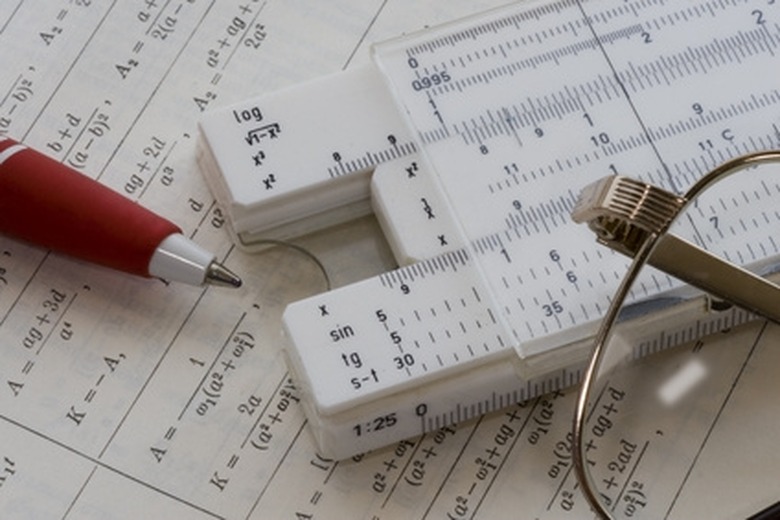How To Factor A Perfect Cube
A perfect cube is a number that can be written as a^3. When factoring a perfect cube, you would get a * a * a, where "a" is the base. Two common factoring procedures dealing with perfect cubes are factoring sums and differences of perfect cubes. To do this, you will need to factor the sum or difference into a binomial (two-term) and trinomial (three-term) expression. You can use the acronym "SOAP" to assist in factoring the sum or difference. SOAP refers to the signs of the factored expression from left to right, with the binomial first, and stands for "Same," "Opposite" and "Always Positive."
Step 1
Rewrite the terms so that they are both written in the form (x)^3, giving you an equation that looks like a^3 + b^3 or a^3 – b^3. For example, given x^3 – 27, rewrite this as x^3 – 3^3.
Step 2
Use SOAP to factor the expression into a binomial and trinomial. In SOAP, "same" refers to the fact that the sign between the two terms in the binomial portion of the factors will be positive if it is a sum and negative if it is a difference. "Opposite" refers to the fact that the sign between the first two terms of the trinomial portion of the factors will be the opposite of the sign of the unfactored expression. "Always positive" means that the last term in the trinomial will be always positive.
If you had a sum a^3 + b^3, then this would become (a + b)(a^2 – ab + b^2), and if you had a difference a^3 – b^3, then this would be (a – b)(a^2 + ab + b^2). Using the example, you would get (x-3)(x^2 + x*3 + 3^2).
Step 3
Clean up the expression. You may need to rewrite numerical terms with exponents without them and rewrite any coefficients, like the 3 in x * 3, in the proper order. In the example, (x-3)(x^2 + x * 3 + 3^2) would become (x-3)(x^2 + 3x + 9).
Cite This Article
MLA
Wedel, Kristy. "How To Factor A Perfect Cube" sciencing.com, https://www.sciencing.com/factor-perfect-cube-8240884/. 24 April 2017.
APA
Wedel, Kristy. (2017, April 24). How To Factor A Perfect Cube. sciencing.com. Retrieved from https://www.sciencing.com/factor-perfect-cube-8240884/
Chicago
Wedel, Kristy. How To Factor A Perfect Cube last modified March 24, 2022. https://www.sciencing.com/factor-perfect-cube-8240884/
